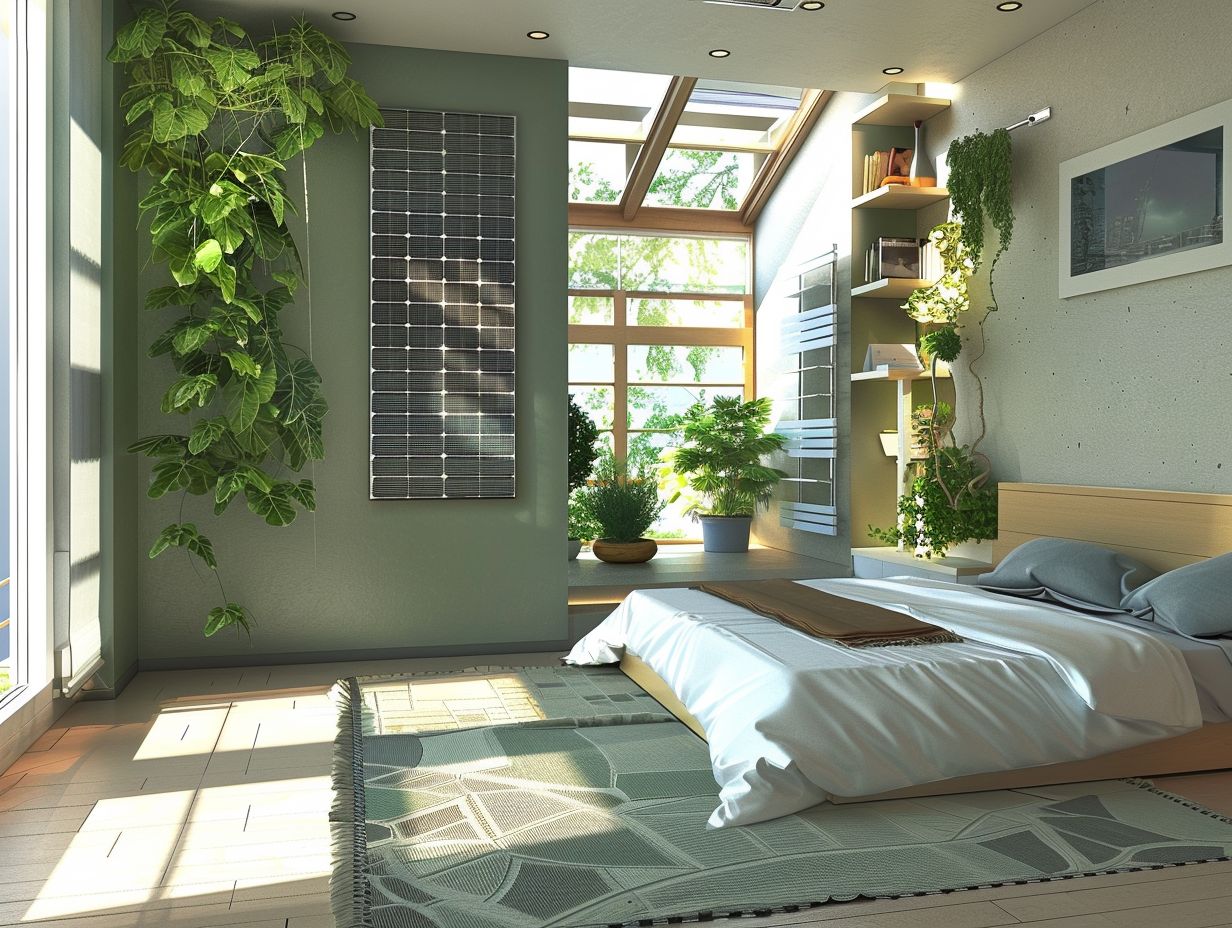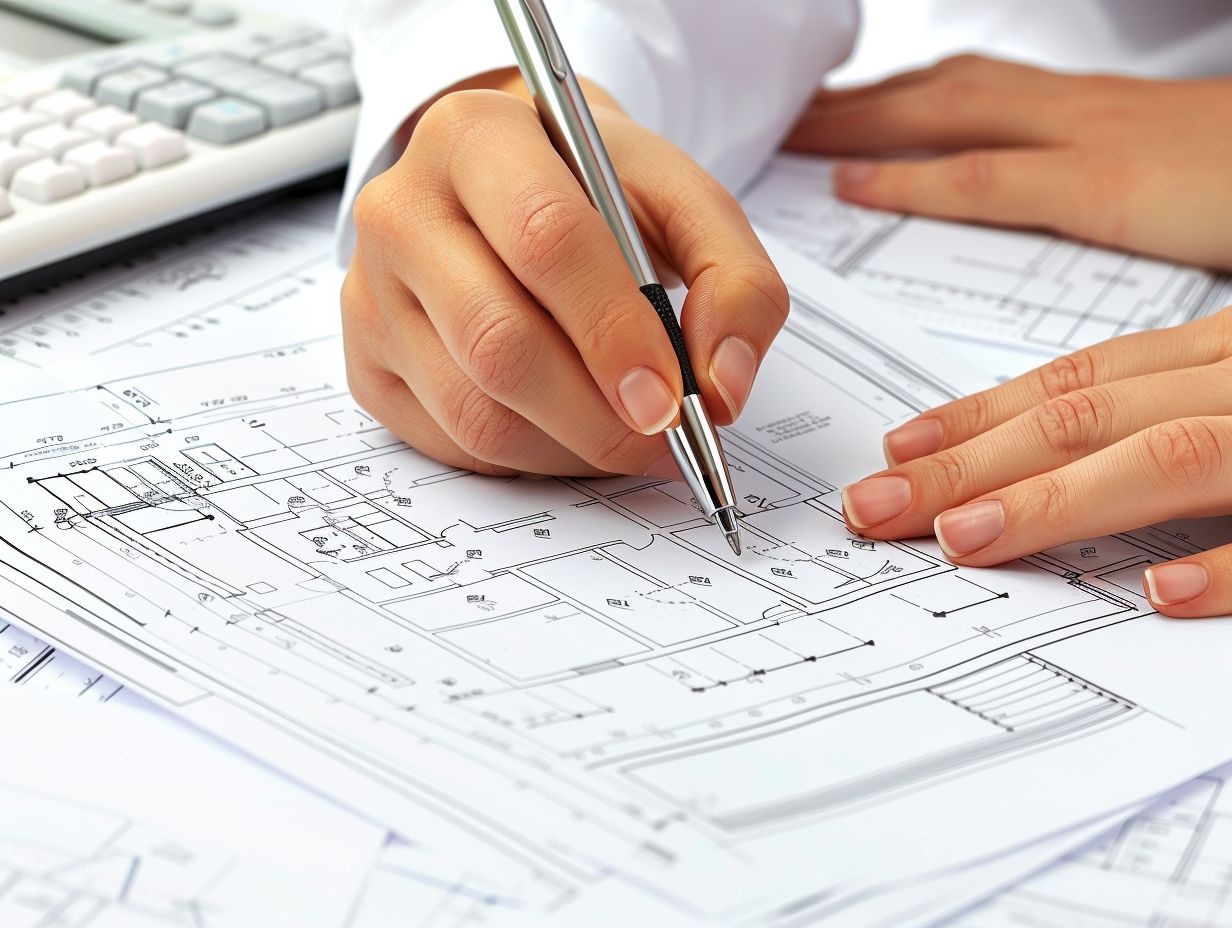
Sustainable Living Top Ecofriendly Technologies For Modern Room Additions
Are you interested in enhancing the environmental sustainability of your residence?
This article will examine the most effective eco-friendly technologies suitable for contemporary room expansions. From solar panels to green roofs, various options will be discussed to assist in reducing your ecological footprint and decreasing expenses.
Additionally, we will explore the advantages of utilizing these technologies, including reduced energy costs and a diminished carbon footprint.
We invite you to discover ways in which you can establish an eco-friendly and sustainable living environment.
What is Sustainable Living?
Sustainable living is defined as a lifestyle that seeks to minimize the utilization of the Earth’s natural resources by advocating for environmentally conscious decisions that support long-term environmental sustainability and individual well-being. This concept underscores the significance of embracing practices that not only address current needs but also ensure that forthcoming generations can flourish in a healthful environment.
Energy conservation is a pivotal aspect of sustainable living, promoting the adoption of renewable energy sources like solar or wind power. Waste reduction entails limiting waste generation through activities such as composting, recycling, and minimizing the usage of disposable items. Opting for sustainable materials, such as bamboo, reclaimed wood, or recycled plastics, aids in diminishing the environmental repercussions of consumption.
Eco-Friendly Technologies for Modern Room Additions
The integration of environmentally sustainable technologies into contemporary room additions represents a proactive approach to developing sustainable living environments that emphasize energy efficiency, environmental stewardship, and improved indoor air quality.
Solar Panels
Solar panels utilize solar energy to produce renewable energy, offering households a sustainable and cost-effective method to diminish their carbon footprint and decrease energy expenditures.
This process entails photovoltaic cells housed within the solar panels that transform sunlight into electricity, enabling the operation of appliances and lighting. Various types of solar panels exist, such as monocrystalline and polycrystalline, each exhibiting distinct efficiency levels and costs.
Through the incorporation of solar technology into their residences, individuals can not only diminish their dependence on traditional fossil fuels but also enjoy enduring environmental sustainability and financial advantages, including lowered energy bills and potential government incentives.
Rainwater Harvesting System
A rainwater harvesting system is designed to collect and store rainwater for various non-potable uses, such as irrigation, toilet flushing, and laundry. This system promotes water conservation and sustainable practices within a household.
The utilization of a rainwater harvesting system allows individuals to diminish their dependence on municipal water sources, thereby alleviating pressure on the overall water supply. Components commonly found in such systems include a collection surface, often a roof, gutters for directing water flow, a filter for debris removal, a storage tank, and a distribution system.
Plus its immediate benefits of reducing water waste and cutting water expenses, rainwater harvesting also yields positive environmental outcomes. These include the mitigation of stormwater runoff and erosion, the restoration of groundwater levels, and the fostering of biodiversity in local ecosystems.
Green Roofs
Green roofs are environmentally friendly roofing solutions that promote sustainable urban planning by integrating living vegetation on rooftops. These roofs offer various advantages, including improved insulation, reduced heat absorption, and enhanced stormwater management.
By incorporating green building materials like recycled content and sustainable resources in roof construction, these eco-friendly roofs not only enhance energy efficiency but also contribute to the mitigation of the urban heat island effect. Green roofs also play a vital role in improving air quality by absorbing pollutants and carbon dioxide, fostering biodiversity by creating habitats for birds and insects, and enhancing the visual appeal of urban landscapes.
The integration of green roofs into building design represents a significant stride towards establishing healthier and more sustainable living environments.
Energy Efficient Windows
Energy-efficient windows are engineered to reduce heat transfer, enhance insulation, and improve energy efficiency within buildings. This functionality leads to decreased energy consumption and lowered utility expenses, all while ensuring an optimal level of indoor comfort.
These windows are typically equipped with advanced glazing technologies that serve to block harmful UV rays while allowing natural light to penetrate, thus diminishing the necessity for artificial lighting during daylight hours. By effectively sealing out drafts and external noise, energy-efficient windows foster a tranquil and comfortable indoor environment. Additionally, their superior insulation capabilities enable the attainment of Energy Star ratings, underscoring their capacity to significantly diminish energy loss and promote overall sustainability.
Smart Thermostats
Smart thermostats serve as cutting-edge home automation tools designed to enhance energy management through the regulation of heating and cooling systems in accordance with occupants’ preferences and usage patterns. By facilitating energy efficiency and the adoption of sustainable practices, these sophisticated devices play a pivotal role in modern households.
These intelligent gadgets play a dual role in conserving energy by ensuring the activation of heating or cooling systems only when necessary, thereby curbing energy wastage and contributing to reduced utility expenses. Through the automated adjustment of temperatures in alignment with residents’ activities and schedules, smart thermostats not only deliver convenience and enhanced comfort but also aid in the reduction of a household’s carbon footprint.
Furthermore, the seamless integration of these devices into smart home systems enables remote control and monitoring, enableing users to effect real-time modifications for optimal efficiency and the promotion of environmentally-friendly living practices.
Insulation and Air Sealing
Adequate insulation and air sealing are integral aspects of energy-efficient residences, ensuring optimal indoor air quality, thermal comfort, and adherence to energy efficiency regulations to promote sustainable living.
These fundamental elements not only contribute to the preservation of a healthy indoor environment by mitigating moisture accumulation and limiting the ingress of external pollutants but also serve a pivotal function in minimizing heat loss in colder seasons and heat gain in warmer seasons.
Various insulation materials, including fiberglass, cellulose, spray foam, and rigid foam boards, present varying levels of efficacy in heat retention and air leak resistance. When employed in conjunction with air sealing methodologies such as caulking, weatherstripping, and sealing around windows and doors, they facilitate the establishment of a well-insulated building envelope that curtails energy usage and utility expenses while enhancing overall living conditions.
Benefits of Using Eco-Friendly Technologies
The utilization of eco-friendly technologies presents numerous advantages, such as:
- Diminishing the environmental repercussions of human endeavors
- Attaining substantial cost reductions through enhanced energy efficiency
- Fostering enduring energy conservation for sustainable lifestyle practices
Environmental Impact
The utilization of eco-friendly technologies has a noteworthy environmental impact that encompasses reduced carbon emissions, minimized resource depletion, and the establishment of green infrastructure that facilitates sustainable development and ecological conservation.
Incorporating these sustainable technologies can substantially diminish the carbon footprint of communities, thereby aiding in the mitigation of climate change at both local and global levels. Moreover, the adoption of eco-friendly technologies is pivotal in the preservation of natural resources, including water and energy, thereby fostering a more sustainable future.
Additionally, these environmentally conscious practices contribute to the formation of eco-friendly infrastructures in urban settings, which in turn promote a healthier and more sustainable living environment for inhabitants.
Cost Savings
The utilization of eco-friendly technologies presents a notable benefit in potential cost savings in the long run. Energy-efficient appliances, renewable energy sources, and sustainable practices all contribute to decreased utility expenses and substantial financial advantages for homeowners.
These environmentally friendly upgrades not only promote a more sustainable environment but also offer economic benefits. For example, the installation of solar panels can significantly reduce electricity costs by utilizing natural sunlight for power generation. Furthermore, the implementation of energy-efficient lighting solutions and insulation materials can further decrease energy consumption, resulting in lower monthly utility expenditures.
By embracing environmentally conscious practices, individuals have the opportunity to enhance the market value of their homes. Prospective buyers increasingly prioritize properties equipped with sustainable features, leading to the potential for significant returns on investments.
Considerations Before Implementing Eco-Friendly Technologies
Ahead of integrating environmentally friendly technologies, it is essential to take into account various factors. These include the allocation of budget for the initial investment and the consideration of long-term maintenance costs. By carefully considering these aspects, organizations can ensure the adoption of sustainable solutions that are in line with eco-conscious principles. This approach aims to strike a harmonious balance between environmental responsibility and financial feasibility.
Budget and Maintenance
When assessing eco-friendly technologies, it is imperative to evaluate the budget for installation and maintenance. This evaluation is crucial to ensure the viability of sustainable solutions and to promote a green living approach that strikes a balance between environmental awareness and fiscal responsibility.
The consideration of budget allocation during the deployment of eco-friendly technologies necessitates a strategic approach that amalgamates cost-effectiveness with long-term sustainability. Opting for energy-efficient appliances, investing in renewable energy sources, and integrating smart home technology are all measures that can aid in reducing environmental impact while also managing expenses prudently.
Moreover, monitoring and optimizing energy consumption through the utilization of smart meters and programmable thermostats can further augment cost savings and operational efficiency. By meticulously planning the initial investment and the ongoing maintenance expenditures, individuals and organizations can optimize the advantages of eco-friendly technologies within their financial constraints.
Creating a Sustainable and Eco-Friendly Home
The creation of a sustainable and eco-friendly home entails the utilization of green building materials, energy-efficient appliances, and eco-friendly construction techniques to establish residential environments that prioritize environmental sustainability, energy efficiency, and overall well-being.
Adopting a comprehensive approach, sustainable home design encompasses a wide array of considerations ranging from the selection of non-toxic paints and finishes to the optimization of natural light and ventilation to reduce dependence on artificial heating and cooling systems. By incorporating eco-friendly enhancements such as solar panels, rainwater harvesting systems, and energy-efficient windows, homeowners can significantly decrease their environmental footprint and utility expenses. The implementation of waste reduction strategies such as composting, recycling, and opting for products with minimal packaging promotes a more sustainable lifestyle within the household.




No Comments